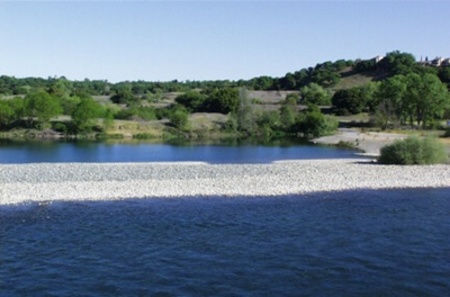Cool the water for spawning
Salmon and steelhead can swim hundreds of miles on their migrations from the ocean back to their birth watersheds, only to find the water temperatures are too hot for them to spawn.
 Englebright Dam on the Yuba River © Amit Patel / Flickr
Englebright Dam on the Yuba River © Amit Patel / Flickr
The Problem
Where dams block access to historical streams high up in watersheds, salmon are forced to live and lay their eggs in the waters directly below the dams. Salmon require cold water to survive and spawn. Unfortunately, the water released from behind dams is often too warm after it has sat still in the sun behind the dam. Also, even on many streams where major dams don’t exist, water diversions for agriculture reduce stream flows during the summer to a point where water temperatures are high. These warm waters reduce survival and spawning success of salmon.
 Shasta Dam, on the Sacramento River, was one of the first to be modified with a temperature control device to protect salmon; the 300-foot tall structure on the back of the dam enables managers to combine water from different levels in the water column to reach the ideal temperature in the outflow to the river below © iStockphoto.com/slobo / Ensia
Shasta Dam, on the Sacramento River, was one of the first to be modified with a temperature control device to protect salmon; the 300-foot tall structure on the back of the dam enables managers to combine water from different levels in the water column to reach the ideal temperature in the outflow to the river below © iStockphoto.com/slobo / Ensia
The Solution
Release and maintain cold water at critical times of year when adult fish arrive to spawn
While many dams are now operated to release cold water at the right times and, in some streams, agricultural users are being asked to leave more cold water in streams at the right times, it does not always happen, and it is only getting harder with climate change-induced drought. Greater collaboration among the salmon conservation community, dam operators and the farming community is needed to develop ways to release and maintain just enough cold water where and when salmon need it most.

